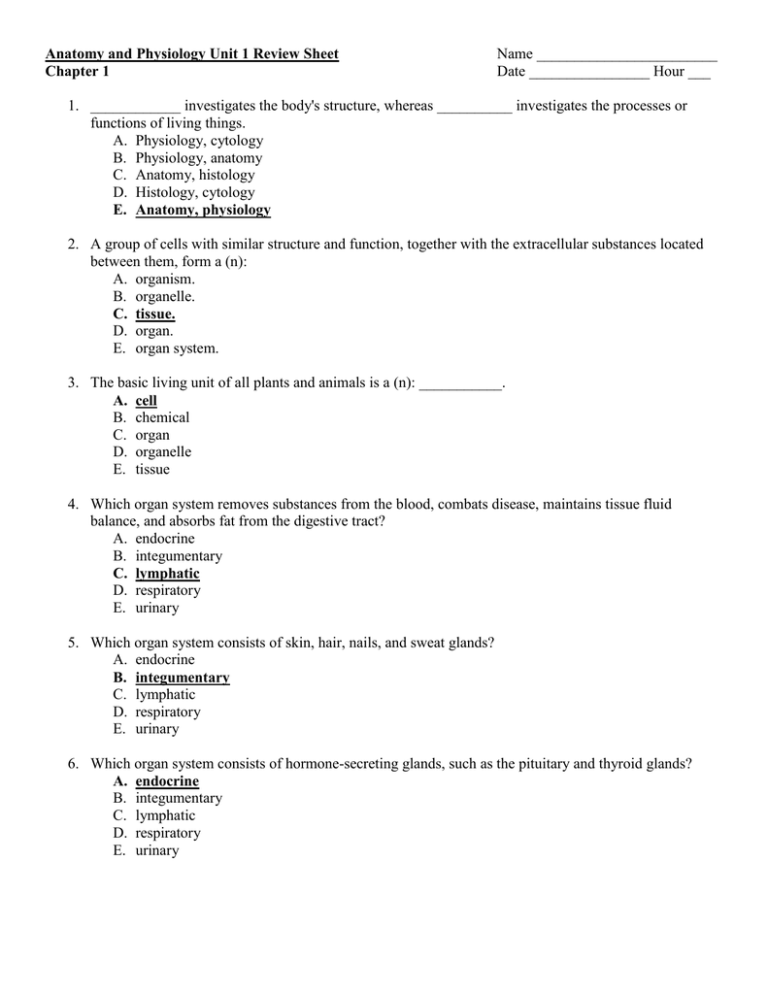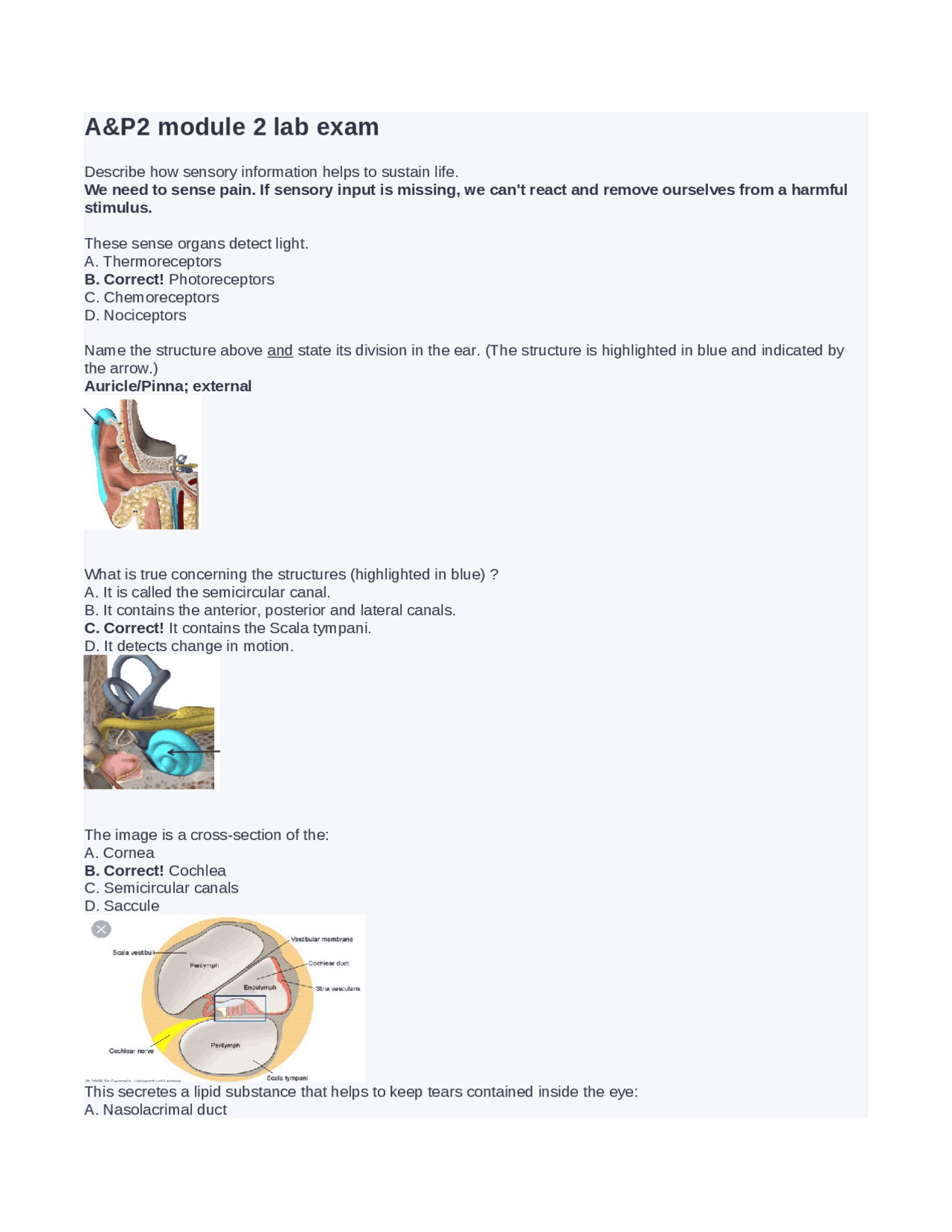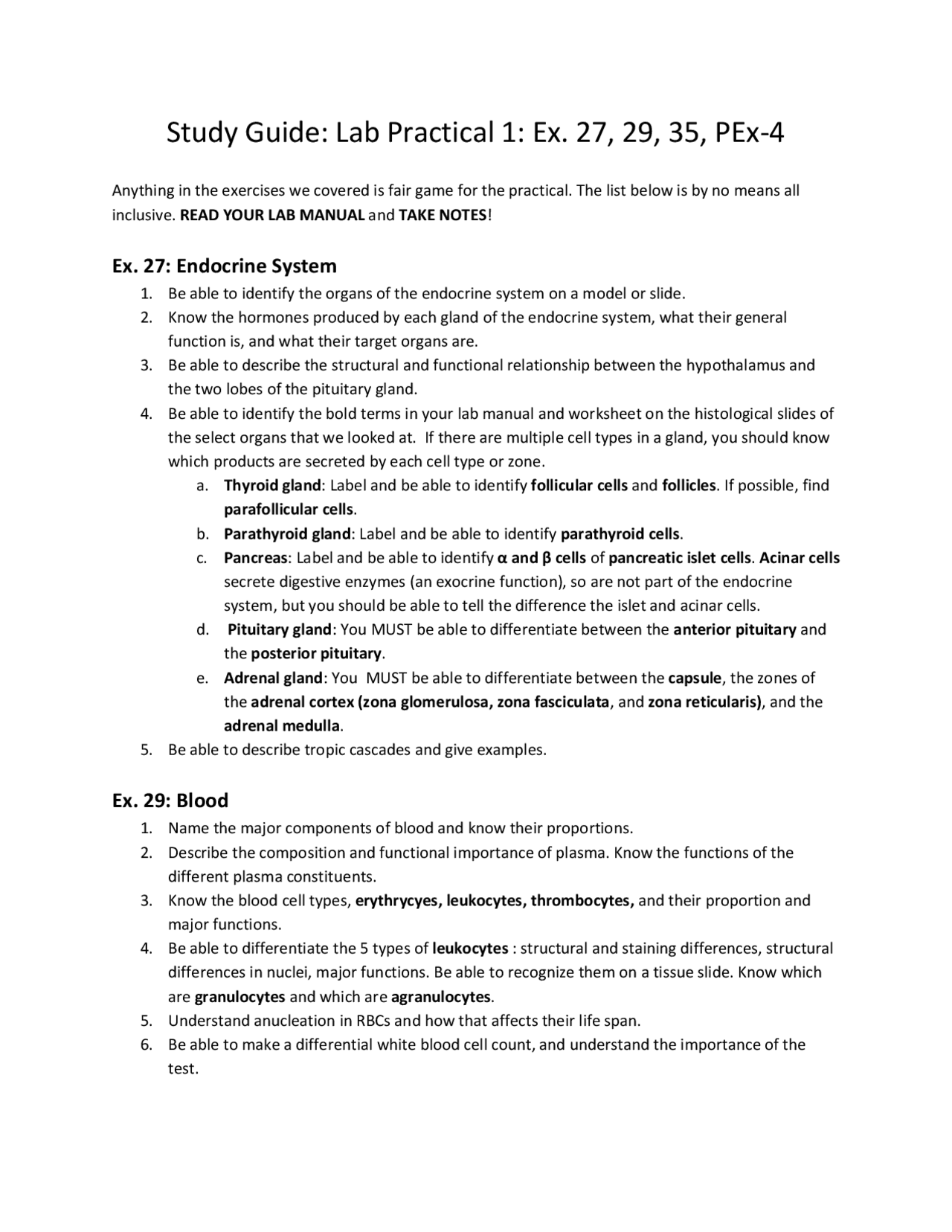Anatomy And Physiology 2 Lab Practical Study Guide

Okay, future doctors, nurses, physical therapists, and anyone else brave enough to wrestle with the magnificent beast that is Anatomy and Physiology 2! Let's talk about that looming lab practical. You know, the one that might currently be causing you to sweat more than you would during a marathon fueled by questionable gas station sushi?
Fear not! We're going to break this down, making it less "nightmare fuel" and more "delicious, brain-boosting smoothie."
Know Your Players: Tissues, Bones, and Body Systems…Oh My!
First up, those pesky tissues! Remember epithelial, connective, muscle, and nervous? Think of epithelial tissue as the body's wallpaper, protecting everything underneath.
Connective tissue is your body's structural support, like the steel beams in a skyscraper. Muscle tissue is what allows you to dance (or, let's be honest, clumsily attempt to dance) at parties.
And nervous tissue? That's your body's super-fast communication network, sending messages faster than you can say, "Did I leave the stove on?"
Bones: The Skeletal Crew
Next, bones! Oh, bones. Learn them! The femur, humerus, tibia, fibula… These are the VIPs of your skeletal system.
Picture each bone having its own unique personality. The femur is like the strong, dependable friend, always there to support you. The carpals? Those are the tiny, fiddly ones that like to hang out in a group, confusing everyone.
The Systems Showdown
Now, onto the big kahunas: the body systems! Cardiovascular, respiratory, digestive, urinary…it's like a whole cast of characters working together in a bizarre, biological sitcom.
The cardiovascular system is like the delivery service, ensuring everyone gets the oxygen and nutrients they need. The respiratory system is the air purifier, taking in the good air and expelling the bad.
And the digestive system? That's the food processor, breaking down your pizza and turning it into energy (and other things we won't discuss at the dinner table).
Lab Practical Domination: Tips and Tricks
So, how do you actually *nail* this lab practical? Here's the secret: repetition, repetition, repetition! Use flashcards, draw diagrams, quiz yourself until you dream about mitosis and meiosis.
Practice identifying structures on models! Don't just stare blankly at them. Touch them, name them, talk to them (maybe not out loud during the actual practical, though. That might raise some eyebrows).
Form a study group! Misery (and knowledge) loves company! Plus, explaining concepts to others is a great way to solidify your understanding.
Don't cram the night before! Your brain is not a black hole. It needs time to process information. Get some sleep, eat a decent meal (avoid the gas station sushi this time!), and go into the lab feeling confident.
Embrace the Absurdity!
Anatomy and Physiology can be overwhelming, but it's also incredibly fascinating. Remember, you're learning about the amazing machine that keeps you alive, breathing, and able to read this very article.
So, embrace the challenge, laugh at the occasional brain fart, and remember that even the most seasoned doctors had to start somewhere. You've got this! Now go forth and conquer that lab practical!
And if all else fails, just blame the sartorius. Nobody ever remembers what that muscle does anyway.


















